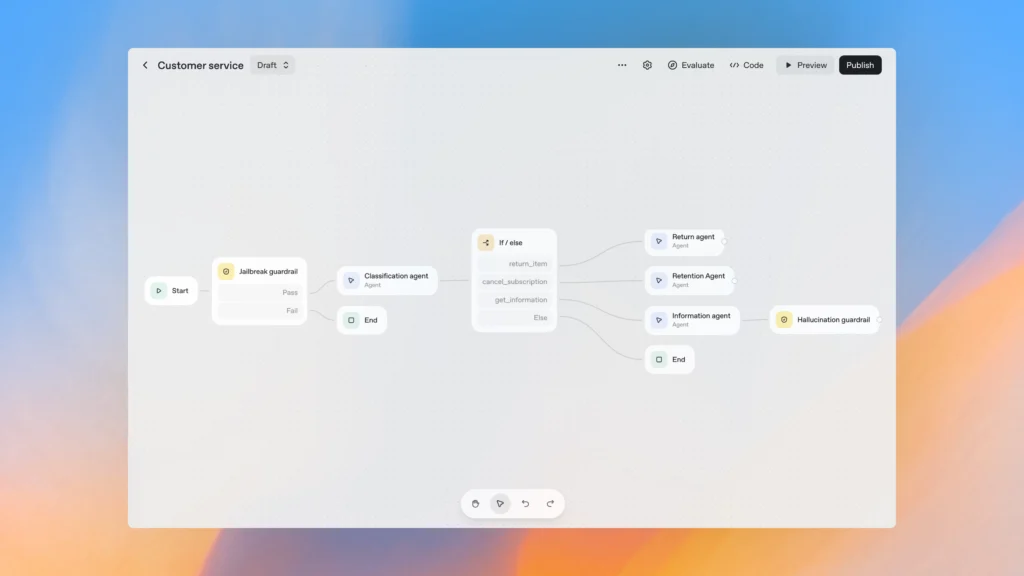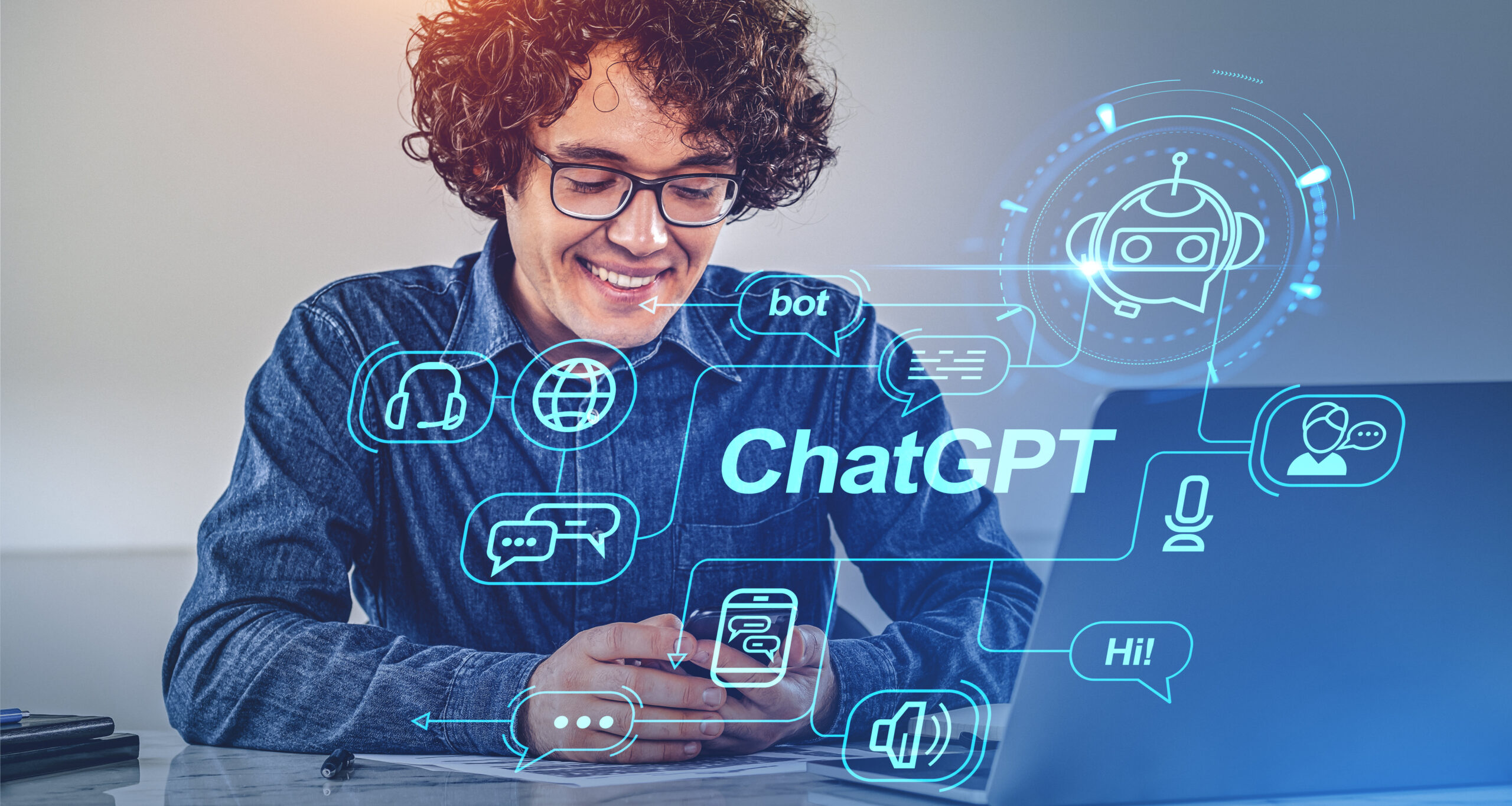ChatGPT Agent Builder and App Integration: New Features
TL;DR: ChatGPT Agent Builder and App Integration bring exciting innovation for businesses
ChatGPT Agent Builder lets users create AI agents that can complete tasks, run code, edit spreadsheets, send emails through Gmail, and manage workflows using live connectors. In Agent Mode, ChatGPT becomes aware of context, interacts with technology in real time, and performs actions with your confirmation. Meanwhile, App Integration connects apps like Canva, Figma, Spotify and others directly into ChatGPT. These updates are already available in select regions but haven’t yet reached the UK. Once they do, companies will be able to use ChatGPT as a practical enterprise tool to automate simple but time-consuming work.
What are ChatGPT Agent Builder and App Integration?
ChatGPT is no longer just a chatbot. With the introduction of Agent Builder and App Integration, it’s becoming a complete workspace where you can plan, create, and act inside a single chat window.
OpenAI’s Agent Builder allows you to design your own AI agents, systems that understand your goals, follow structured workflows, and handle repetitive stuff under your guidance. You can describe what the agent should do, define the data it works with, and decide which connectors it can access. When you turn on Agent Mode, ChatGPT gains permission to act, run code, browse, and even operate through enterprise systems using secure APIs.
For example, a marketing team could build an agent that reads analytics from a spreadsheet, summarises results, drafts a campaign article, and sends a short confirmation message through Gmail. A developer could run code in a safe terminal environment and receive structured output to review. Everything the agent does is logged, so users stay aware of every step and can stop actions at any time.
This is one of the most exciting examples of AI innovation in real business use, automation that works without removing human control.
How does ChatGPT App Integration work?
OpenAI’s new App Integration feature is built on the Apps SDK, which brings real tools directly into ChatGPT. Instead of switching between tabs, you can work inside ChatGPT while the connected apps perform tasks behind the scenes.
You can create a social media design in Canva, open layouts in Figma, explore learning modules in Coursera, or generate a playlist through Spotify, all inside the same chat. ChatGPT confirms every action before it happens, so nothing runs without permission.
The current integrations are live in the US and a few other regions, but the UK is not yet included in the rollout. When they do arrive, UK businesses will have access to tons of connectors and vendor integrations, from CRM systems to productivity tools. That means ChatGPT could soon help you design, plan, or even schedule your calendar events without leaving the platform.
These connectors make ChatGPT more like a virtual computer, one that handles enterprise workflows and outputs usable results. You ask, it acts, but always under your confirmation.
How does ChatGPT Agent Mode make it aware of tasks?
Agent Mode is where everything comes together. It allows ChatGPT to become aware of your context and act on it intelligently. When running in this mode, ChatGPT can process data, monitor outputs, and handle breaks in a workflow automatically.
For example, if an agent is collecting data from vendors and one API stops responding, ChatGPT can identify the break, explain what happened, and wait for your next instruction. If you’re editing spreadsheets or running code, Agent Mode ensures that any terminal output or calculation is transparent, logged, and ready for human review.
It’s a big shift from passive AI to active collaboration. You’re not just prompting ChatGPT to write; you’re teaching it to perform parts of your process safely. That’s the balance between automation and human direction, awareness without autonomy.
What other features are included in this update?

The ChatGPT update also introduces subtle but powerful tools for developers and enterprises. The new SDK allows companies to create custom connectors so ChatGPT can interact with private systems securely. That’s crucial for enterprise use, where internal data, CRMs, or vendor systems need strict control.
There’s also a stronger focus on transparency. ChatGPT now shows clearer confirmation messages, permission summaries, and error feedback when something breaks mid-task. For example, if a connector to Gmail times out, the AI explains what went wrong instead of silently failing. These details make the platform safer for business workflows.
Another feature worth noting is contextual persistence. ChatGPT can remember the topic you’re working on, even as you switch between apps. You could design something in Canva, then move to Figma, and it will still understand your theme, colours, and purpose. That continuity is what makes this update so exciting, it finally feels like a proper workspace, not just a chat tool.
How can companies use these tools when they arrive in the UK?
When these features roll out here, the possibilities for SMEs will be endless. You’ll be able to use ChatGPT to automate data entry, send internal comments or follow-up emails, manage content calendars, or prepare vendor reports. You can abstract away the manual parts of your day, letting the AI handle the repetitive actions while you focus on creative decisions.
For example, you might ask your agent to generate an article draft, add design suggestions from Canva, attach a spreadsheet of analytics, and send a final Gmail summary to your team for review. Each step would require your confirmation, keeping you in control but freeing up valuable time.
It’s this balance of automation and awareness that makes the ChatGPT Agent Builder such an exciting piece of technology for growing companies.
How Netzoll uses AI to deliver faster, smarter results for your business
At Netzoll, we use AI tools like ChatGPT within our own workflow to make complex technology work better for small and medium-sized businesses. Every piece of content or strategy we produce is supported by AI for speed, precision, and data-driven insight, but always reviewed and refined by a human expert.
This combination gives you the best of both worlds: the efficiency and consistency of machine assistance, paired with the accuracy, judgement, and creativity that only people bring.
We personally oversee every stage of the process, from ideation to final proofing, ensuring that everything we deliver is not only technically sound but also aligned with your brand, goals, and audience.
Our approach keeps AI where it’s strongest, handling the heavy lifting, while our team focuses on the details that define quality.
Why this update represents the future of practical AI

This update signals something bigger than another new feature. ChatGPT is becoming a workspace that merges conversation, automation, and real-world technology. Agent Mode allows AI agents to perform complex tasks with awareness and transparency. App Integration bridges the gap between creativity, data, and action. Together, they abstract away tedious steps so businesses can focus on results.
The technology isn’t fully live in the UK yet, but it’s coming soon. When it does, companies that already understand these tools will adapt faster, automate smarter, and gain a real edge.
A simple next step for forward-thinking SMEs
The ChatGPT Agent Builder and App Integration update is one of OpenAI’s most exciting releases yet, combining automation, context, and creativity into a single tool. While it’s not available in the UK just yet, now’s the time to prepare your workflows and plan your strategy.
At Netzoll, we use AI within our workflow to improve speed and precision, but every project is still overseen and refined by our human team. You get the efficiency of technology with the accuracy and judgement of real people. We’ll guide you step by step so you’re ready to get genuine value from ChatGPT as soon as these features arrive.
Contact Netzoll today to start preparing your business for the next phase of practical, human-centred AI.

